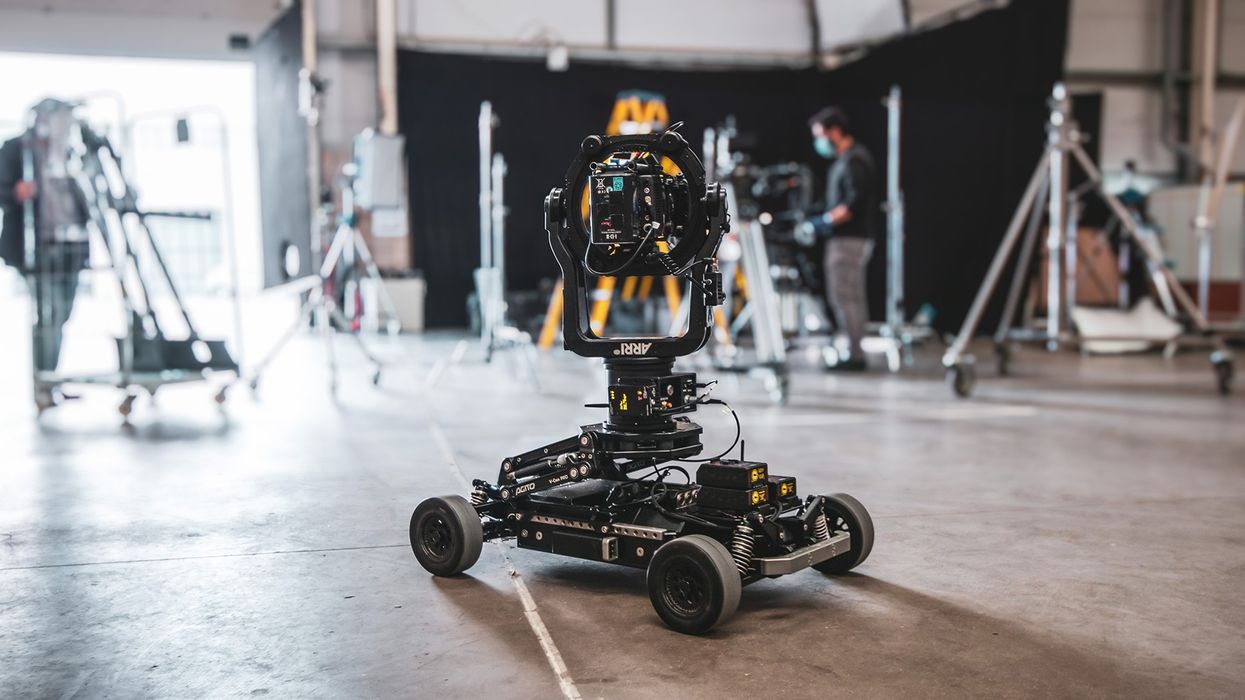Control Dolly Shots from Afar with AGITO from Motion Impossible
With social distancing here to stay, you can control dynamic, innovative camera moves from further from set with this modular dolly system from Motion Impossible.

While remote camera heads have been a thing for a while, allowing operators to control pan, tilt, and rotate from a distance, moving the base of the camera has remained primarily a direct, human activity. Even on shoots with an elaborate remote head, it's typically mounted to a dolly and maybe a jib that is operated by human hands to place it. The exception has been high-speed work like the amazing devices from Mark Roberts Motion Control, but those are incredibly expensive and physically massive.
With increasing focus on social distancing continuing to be a part of film shoots long term, there is a new demand for the ability to move a camera in creative ways while keeping the crew physically separate from the cast.
Earlier this year ARRI launched their remote camera systems offering a variety of well-integrated solutions for allowing camera control remotely, and demonstrated with the AGITO providing motion). With the AGITO, which will be offered through AbelCine rentals, users get the ability to move their dolly around and stay safe.

The AGITO Modular Dolly system is designed to allow camera operators to move the camera either on dolly tracks or off from a safe distance while executing moves that might have been impossible before. Being lighter than a normal dolly, and not having to carry a physical operator and first assistant, the AGITO can execute moves with faster speed and direction changes than you might traditionally be able to execute. It's designed to still be smooth and silky even at slow speeds, making it a versatile tool for a wide variety of productions.
The AGITO is built around a central core unit that houses the processing electronics, power distribution, and is where you will mount a variety of accessories. On top of the core, you would mount the camera, either on a tube for height or directly to a stabilizer system.
One of our favorite features is the interchangeable wheel system at either end of the core. Often when going from dolly tracks to working on a dance floor you used the same set of rubber wheels that weren't optimal for either situation, or you placed the dolly in skate trays on your tracks. With the AGITO, you have a set of dedicated track wheels optimized for track performance. When going off the track, you have a set of sport wheels that should offer more flexibility over a variety of terrain.
The off-road (or, at least, grass field) abilities are one of the most exciting flexibilities of the platform. Previously, to get these kinds of shots involved laying long runs of track, or getting an off-road Segway/Gator and a Steadicam operator. The ability to do those shots directly, then move back over to track, is a great flexibility.
One of the worries that many have when they hear the word "robotics" is of course, "What about jobs?" And while robots might actually cause job loss on the factory floor, it doesn't seem likely that a robotic dolly will cost any on-set jobs. It still needs a remote operator, in most cases an experienced dolly grip who is used to collaborating with a director and DP to design shots. This tool is one that experienced dolly grips should integrate into their toolset and that directors and DPs should understand to design for effectively, but it will still need dedicated professionals crafting shots.

As more and more production returns we all need to learn new skills to ensure we can achieve all of our artistic goals while remaining safe. AGITO is absolutely a tool to keep in the kit to do that.
You check more about AGITO out over at the Motion Impossible website.













